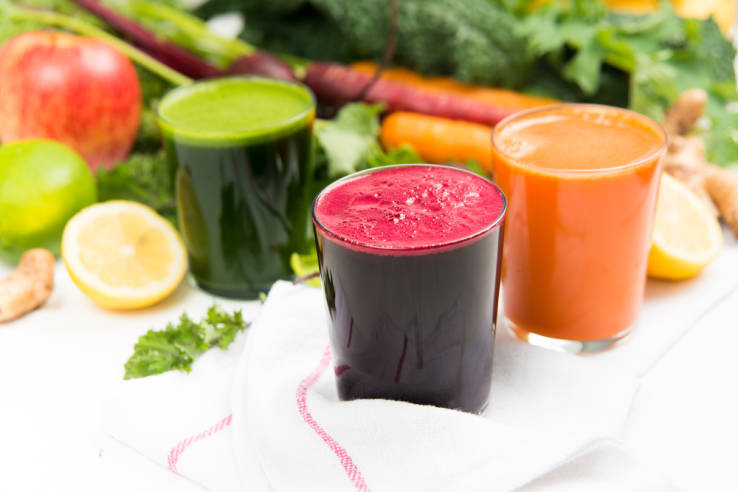Countries With The Healthiest Diet
Understanding what is healthy to eat seems to be a maze of obstacles in our modern world of processed and enriched food. You have to check the nutritional value of every product you buy at the grocery store, know how to prepare them, even be cautious on what is the "in" food. There is a tug-o-war on what food is good for you and what is not. Such as carbs–one day they are proclaimed unhealthy then the next day you hear news that it's a necessity for your body.
I say let's stop this food mumble jumble and go back to the basics. Let's look back at the diets of our ancestors when obesity, cancer, and heart problems were not considered as a "trend". The traditional dishes of our ancestors were based from whole foods prepared in simple healthy ways. If we return to the old practices of eating, we'll be feeding our body the dosage of nutrients and minerals which can drastically help lead a healthier life.
To support that information, the countries with the reputation to have the healthiest diets are those who still strongly put into practice the diets of their forefathers.
Basis of Judging Healthiest Countries in the World
Since we are generally talking about the traditional diets of different cultures, it only gives justice to acknowledge that there is no ultimate health freak country.
Like the assortment of flavors in our spice cabinets, each spice gives its own unique flavor to a dish. As for the traditional diets of these nations, each has their own unique practice that promotes good health.
The countries listed below show their most distinctive techniques that make eating such a delightful way to lead a good life.
Japan
I have always been awed by how the Japanese would infuse their strong culture in every aspect of their life. Their need for continuous improvement known as kaizen, their ingenuity on everything, and their culinary signature of fresh dishes!
In a 2008 research, Japan was reputed to be the country to hold one of the highest life expectancies for women reaching the age of 85.59, and men to the age of 78.73. Japan is also acknowledged to have low adult obesity rates of only 3% in the industrialized world.
Although the country is also well-known to have one of the highest stress levels in work and school, and as we all know stress is the root of most diseases and sickness, their low cholesterol diet rich in fish, rice, seaweed, stews and other steamed food has worked its purpose to balance their health.
Japanese from the Okinawa region, created a unique practice called "hara hachi bu," meaning "eight parts out of 10?. With this practice, Okinawans stop eating when they are 80 percent full. A perfect practice to prevent over eating because it takes approximately 20 minutes for your body to realize that you are full.
The most classic and famous traditional Japanese dish would be the Miso soup. This soothing soup has kept it's simplicity over many years and is still a grand favorite among Japanese today.
Mediterranean Countries
Countries along the Mediterranean Sea have a strong fusion of culinary dishes. They take pride of their ancestor's cuisines and practices. Countries such as France, Italy and Greece share the secrets to great food and great health. Their food is so uniquely healthy that it has created a title of its own, the obvious "Mediterranean Diet".
The principle aspect of the Mediterranean Diet includes high consumption of olive oil, legumes, cereals and whole wheat bread, fruits and uncooked vegetables. They moderately eat dairy products which consist mostly of cheese and yogurt. With meat, they eat more fish than other meat products. And the signature touch to their diet is drinking wine moderately.
This diet is jam-packed with real food that your body deserves. Fish contains Omega3 Fatty acids which are unsaturated fats that promote overall heart health. Mediterranean people love salads. Green vegetables contain chlorophyll - nature's healing power, which works as a strong anti-oxidant. Olives give an excellent source of vitamin E and iron which also have strong anti-inflammatory properties. The fact that they use olive oil as the base for cooking already makes a large impact on the health benefits of their dishes.
Also a characteristic generally shared by these countries is that doing the groceries is a fun adventurous task, a great routine to get your body moving. It is a lifestyle for them to go to several specialty shops and pick out whole fresh food, instead of going to a one stop shop to buy fast food, canned or pre-packed foods.
The French, Italians, Spanish, Greeks (and also Japan) savor leisurely dining; they give heavy emphasis to dine as a social event. They eat small portions at a time with long meals. The time given helps in digestions and also prevents overeating.
The French also like to accompany their meals with a glass of wine. Moderate consumption of wine is proven to increase HDL or good cholesterol and prevent heart related sicknesses.
Because of this traditional practice, France was recorded to be the country with the lowest heart disease! Amen to Win
Parsley Tabbouleh is a popular example of the fresh dishes that can be found in the Mediterranean Diet. This mouth watering salad is very refreshing, perfect to be served in those hot summer days with friends.
A research conducted by Men's Health states that Portugal ranked the top spot while Spain ranked as runner up to be the countries with highest nutrition in their diets. Although Portugal is not located along the coast of the Mediterranean Sea, their diets have been greatly influenced by their neighboring countries. Portuguese food ranked top because besides adopting one of the healthiest diets in the world, the countries strategic location gives access to Atlantic Ocean. Portuguese eat around one serving of fish a day, keeping the Omega 3 part of their everyday diet.
Iceland has a similar diet to Portugal. Their diet heavily consists of fish and locally grown produce which is the reason for the Icelanders long life expectancy. Choosing locally grown food has more nutrition then imported products. Imports have heavier contents on pesticides and preservatives.
What can we learn from this?
Here are some practices that we can adapt from these countries:
The Fresher, The Better
I firmly believe this golden rule of eating. Indulge yourself in a variety of fresh, unprocessed fruits and vegetables available in any market. Skip the canned mushrooms and baby corn and go to the chilled section of whole foods. Doing this can help a great deal in removing processed food in your diet. Fresh food provides more fiber, fewer calories, saturated fats, trans fats, salt, sugar, and harmful preservatives.
Eat Colorful Food
Put as much color in your meal as possible, this will help you cover the different food groups we need, also it will encourage you to add a variety of vegetables and try new fruits. It is recommended by the USDA (United States Dept. of Agriculture) to eat between five to thirteen servings of fruits and vegetables a day for proper diet and nutrition. Focus on brown colored food rather than white, such as brown rice, brown sugar, whole wheat bread, and cereals. Whole wheat products add fiber to our diets. Fiber is what I call the natural cleansing sponge that helps absorb then remove toxins and waste that build up in our digestive system.
Leisure Dining and Eating in Portions
Dine with companions to make every meal a time to spend with friends and family. It makes eating all the more healthier and fun. Especially since you can have someone to share dessert with instead of giving in the temptation to finish everything to yourself! Appreciate your food; as you dine, smell the food and take the time to savor the flavors as you chew. Chewing your food well helps a great deal for your stomach to digest food faster. Proper chewing is making your food into a rich soft mush before swallowing. For meat, try chewing it 20 times or more.
Another way to enjoy your meals is to eat portions at a time. Serving several courses – salad course, then fruits, entrée, and ending with dessert or coffee is better then putting all your food in one plate. It not only helps prevent grazing over food, setting courses lets you isolate the different flavors. Another thing, eating fresh food first aids in digestion. Ideally it would be more effective if you put time between each course to be served – make more room for digestion and quality time for conversations.
Make a small buffet table. Having a separate table to place your meals is a very helpful technique, since you can't divide all meals into courses. A buffet table weather it is breakfast, lunch, snacks, gives you more time for you to get the food and eat than having the food served in front of you or at arms length.
Shifting your life into a more healthy solution does start with what you eat. It's as simple as going back to the basics, when food is prepared with fresh whole ingredients and eating was a form or art and a social event, like the lifestyle of our ancestors. So let's bring back our traditions.
-
Fat Burning Prescribed Pills - Important Data You Need to Understand About
When it comes to losing weight, prescription drugs are usually a
-
Treadmills - A Way To Achieve Better Health
So, youve finally decided you have to do something to get yourself
-
A spoonful of sugar helps your waistline go down
Weight Loss and Sugar New study challenges conventional thinking that
-
How a Treadmill Can Help You Lose Weight
So, you want to lose weight but no matter how hard you try the FAD
-
What Kind Of Equipment Should Be Found At Lap Band And Weight Loss Surgery Clinics?
Weight loss surgery has become a popular choice for people who have be
-
Weight Loss Reducing Unnecessary Weight
Obesity has become the biggest problem and the main reason of causing
- DON'T MISS
- If You Need To Lose Weight Dont Fall For The Fads
- Measures to Comply with in Grapefruit Diet
- 10 Weight Loss “Rules” You Should NEVER Ignore
- 10 Foods to boost mental sharpness
- Hepatitis In Dogs
- Overweight People And Exercises That Can Help
- Bare Feet and White Flour
- Top 10 Points Of Encouragement For Weight Loss
- Stop The Dieting Yo-yo And Follow This Weight Loss Advice!
- San Diego Weight Loss Clinics See Vitamin D and Bariatric Surgery Connection




